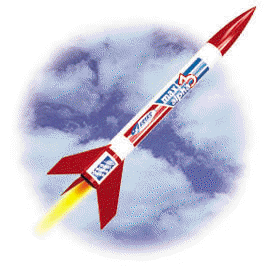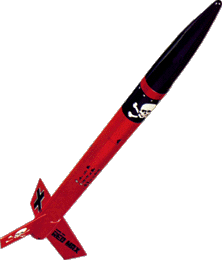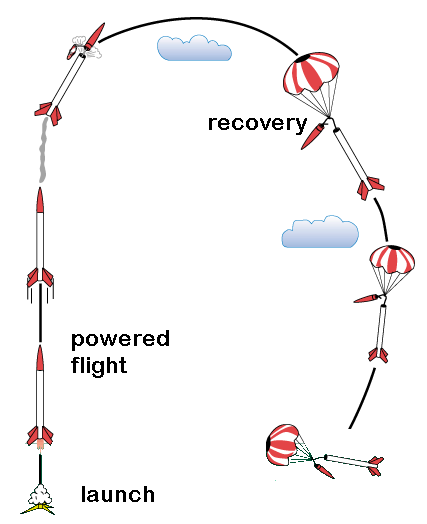BACKGROUND:
Airplanes and
rockets are very important to our society. Humans have invented and
improved their design to control movement in the atmosphere and space.
Airplanes are important for transportation into the atmosphere and
rockets are important to travel in space and for defense.
Humans, to design such machinery, must have a good idea of the physics
that will  make them work. Airplanes and rockets are an excellent example
of how physics is used in our everyday life to control our environment.
Humans were not born with wings, but it should never prevent us from
flying! make them work. Airplanes and rockets are an excellent example
of how physics is used in our everyday life to control our environment.
Humans were not born with wings, but it should never prevent us from
flying!
Airplanes uses
aerodynamic design and an engine to overcome gravity. The airplane
engine uses oxygen from the air to keep the engines working. Rockets
must carry their oxygen for the engines to operate.
A rocket is a generic
term for a wide variety of jet propelled missiles, research vehicles,
thrust devices, and fireworks. Forward motion results from a reaction to
a rearward action of hot gases (Newton's
Third Law of Motion).
Rocket propellants by combustion provide the hot gas es
that produce reaction force (thrust) when ejected to the rear. es
that produce reaction force (thrust) when ejected to the rear.
A rocket engine is
unique in that the fuel and oxidizer are self contained. Jet propulsion
engines carry fuel only and use air to get oxygen. Use the enclosed
picture of a rocket and a jet propulsion engine to aid in your
discussion.
Development of
rockets has been key to space exploration and has been used both in
military and peaceful purposes for hundreds of years. Until 1955 humans
were passive observers to the physics of the sky, since then space
exploration has recognized no limits except the velocity of light.
At present, the rocket is the only
developed engine powerful enough to put a spacecraft into orbit. It is
also the only kind that will work in the mini vacuum of space, where
there is no air. It carries its own oxygen and burns fuel and oxygen
inside a chamber in the motor. Space rockets use a vast amount of fuel
to achieve the thrust necessary for space flight. The giant Saturn V
moon rocket had a thrust of nearly 8 million pounds at lift off. Each of
its rocket motors burned about three tons of kerosene and oxygen each
second.
PROCEDURE:
-
 An activity that students
love, but takes time and commitment, is to make a rocket and launch it.
We highly recommend either having the students make the rockets or have
one that you can launch for students to observe. You may find a parent
that loves rocketry that might want to demonstrate for the students. If
you want to make rockets, this activity is longer than one normal post
lab. You may want students to complete this at home. An activity that students
love, but takes time and commitment, is to make a rocket and launch it.
We highly recommend either having the students make the rockets or have
one that you can launch for students to observe. You may find a parent
that loves rocketry that might want to demonstrate for the students. If
you want to make rockets, this activity is longer than one normal post
lab. You may want students to complete this at home.
-
Go over directions
on how to construct a model rocket. If you choose to use the kit model
ESTES rockets, each model will have the directions in the appropriate
kit.
-
Draw a diagram of
the expected launch on the board and point out that the laws of physics
can explain each part. Understanding the laws of physics enables design
of machinery that performs better.
powered flight
= for every action there is an opposite and equal reaction
coasts upward to peak altitude = the
force of the action in our small rocket, is not great enough to free
the rocket from the atmosphere, the rocket will come down due to
gravitational attraction and frictional forces
recovery system opens -
the parachute retards the downward descent, by increasing the air
resistance
-
Launching the
student's rockets can not only be an enjoyable experience, but also a
learning event for the entire school. Depending on your school
situation, you may want to share the launch with the rest of the school.
This will allow all students in the school to anticipate this experience
when they enter the sixth grade. Safety must be taken if you do a
launch.
-
The launch pad
does not have to be a fancy, expensive pad. It can be inexpensively
made, or it can be purchased. Blasting off the engines just needs a
battery to complete the circuit. You may want to have a parent who has
done rocketry before to help in this launch.
-
Make sure you have
a large, open space. Safety is important. ESTES rocket company has an
excellent manual that can help your first launch be as successful as
your tenth. Note that minor flaws in the rocket assembly or construction
can cause large control errors. Things happen very quickly during rocket
flight. Warning: Do not attempt launches when winds exceeds 10 m.p.h.
Locate launch pad at portion of launch filed from which wind is blowing.
-
Also check city
regulations by calling the local fire marshal. In some cities rockets
are not allowed.
|